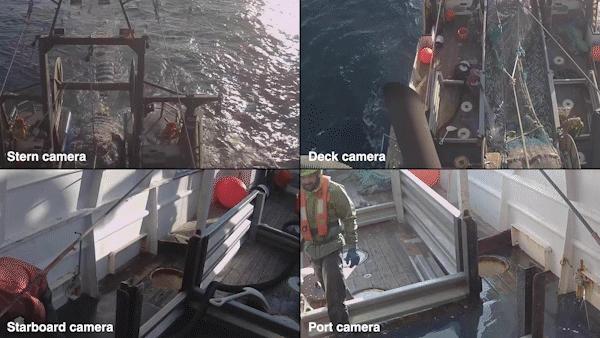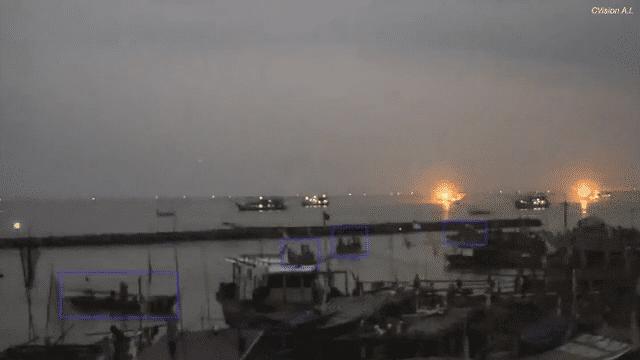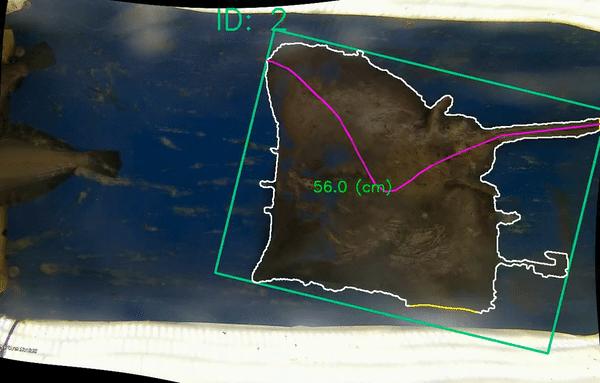How can digital technologies support climate-resilient oceans and communities?
Our Oceans Technology Solutions work is revolutionizing sustainable fisheries

According to the United Nations, over 3 billion people worldwide rely on seafood as a major source of protein and as a significant part of their livelihood. We are running out of time to solve the overfishing crisis — which will deplete more than 80% of fish stocks by 2030 if we don’t act now.
Fortunately, we are in the middle of a digital revolution that is enabling better fisheries management, smarter business decisions and more resilient coastal communities. An increasingly vast array of technological innovations — from automated species recognition software to aerial unmanned drones to acoustic monitoring — are being applied to fisheries in the United States and globally.
These pioneering technologies can turn fishing vessels into "smart boats" and transform how we manage fisheries in the face of climate change, supporting thriving and resilient communities and ecosystems.
Our work
EDF is helping chart a course toward more sustainability and equity for all ocean industries — including fisheries. We are doing this by identifying opportunities to create value on the water, then co-designing technological solutions and scaling successful proof points widely, connecting fishery participants and managers globally with the technology sector, improving understanding of what technologies offer, and advocating for the supportive policies that are needed to catalyze wide-scale change.
Smart Boat Initiative
Through our Smart Boat Initiative, we work with partners to test and scale new sensor, network, data analysis and other technologies to open new frontiers for fishing fleets of all sizes.
Success for these projects depends not only on the technology, but on science-based catch limits, good governance and incentives for fishers to comply — the hallmarks of well-managed fisheries.
Pacific Northwest: Activity recognition and wireless transmission for fisheries electronic monitoring.
Watch how next-generation electronic monitoring, or EM, systems on large vessels can reduce the costs of monitoring what boats catch, a key part of managing fishing sustainably.
Indonesia: Electronic reporting for sustainable fisheries management.

Digitization of fisheries data further enables a slew of technological advances. In Indonesia, we are working with partners to digitize fisheries data collection across the world’s largest archipelago, helping to bring data analysis and visualization tools to the fingertips of fishery managers.
Pacific Northwest: Automatic species identification through machine learning.

Along with fishers in Oregon and partners at NOAA Fisheries and the University of Washington, we are designing AI tools such as species recognition and size measurements to decrease the monitoring burden from fishers during their sorting operations and enable the expansion of electronic technologies throughout the entire fleet.
Gulf of California, Mexico: Community catch monitoring.
In Mexico’s upper Gulf of California, fishers have implemented a community catch monitoring program, where they use a smartphone app to register catch information from each vessel when they return from fishing, resulting in accurate accounts of legal fishing effort for the Mexican government and fishery stakeholders. In this way, the technology enables fishers, the local community and government to work together toward a more sustainable fishery.
SmartPass
Estimating the total amount of fish caught is the biggest problem left to solve in most recreational and small-scale fisheries. SmartPass couples digital cameras and artificial intelligence to tackle this challenge head on.
Building connections
We work with fishery stakeholders, managers and various partners around the world to harness the power of technology for climate-resilient fisheries. Through global and regional fisheries technology dialogues, workshops and reports or videos, we encourage awareness and cross-pollination of ideas to drive more efficient use of resources and better outcomes.
Since 2020, EDF has partnered with World Wide Fund for Nature to host the Seafood and Fisheries Emerging Technologies conference, or SAFET, which is a growing online community for the sharing of new and emerging technologies to improve sustainable fishing and supply chains.
EDFish blog: Stay informed on the work for climate-resilient oceans













